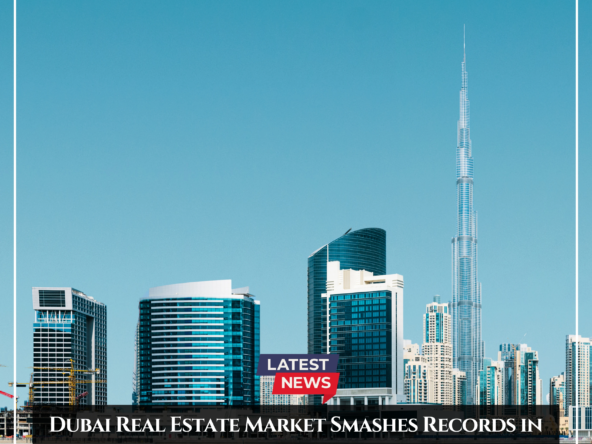Indian investors are gearing up for a big leap. Thanks to recent regulatory reforms in India, India’s high net worth individuals (HNWIs) and corporate entities are expected to direct approximately AED 73.45 Billion (USD 20 billion) per year into UAE assets, primarily real estate.This comes at a time when Dubai’s property market is witnessing record transaction volumes and rising investor interest.
What’s Changed: Regulation & Market Momentum
1. Liberalisation of Foreign Investment Rules in India
- The Reserve Bank of India (RBI) has revised its Overseas Direct Investment (ODI) and Overseas Portfolio Investment (OPI) guidelines under FEMA, allowing Indian entities to invest abroad under the Automatic Route up to 400% of their net worth without prior approval.
- These reforms significantly increase flexibility, reducing bureaucratic friction and allowing Indian investors to more easily channel capital overseas.
2. Surge in Outbound Capital and Remittances
- India’s overseas investment (both ODI & OPI) rose ~68% year-on-year in FY 2024-25 to about USD 41.6 billion from ~USD 24.8 billion.
- The Liberalised Remittance Scheme (LRS) is being used more intensively: outward remittances between April 2023 and February 2024 hit a record USD 29 billion.
3. Dubai’s Real Estate Boom
- The UAE real estate market is valued at nearly USD 680 billion in assets.
- In 2024, the UAE saw 226,000 real estate transactions worth AED 761 billion (~USD 207 billion). That’s a 36% jump in volume and 20% in value compared with the prior period.
- Dubai is attracting large numbers of new investors; over 110,000 new property investors entered the market in 2024 (up ~55% year-on-year) from abroad.
Why UAE / Dubai Is a Magnet for Indian Investors
Several factors are converging to make Dubai (and more broadly the UAE) an increasingly appealing destination for Indian capital:
- Regulatory clarity and ease: The RBI’s rules make outbound investment simpler. The UAE’s property laws, freehold zones, residency-by-investment options, etc., add to the attractiveness.
- High growth and returns potential: Strong demand, rising property values, and high transaction volumes mean potential capital appreciation. Rental yields in many segments are also appealing.
- Diversification & stability: Investing in assets abroad gives exposure to a more global, diversified portfolio and helps hedge against domestic economic, regulatory, or currency risks.
- Lifestyle, safety & infrastructure: The UAE’s appeal isn’t just financial. For many Indian investors, considerations such as lifestyle, safety, world-class infrastructure, healthcare, schooling, and prospects for family relocation or second homes matter.
- Digital & tech-enabled investment mechanisms: Tokenisation pilots, PropTech, AI tools for valuations, and better platforms are simplifying cross-border property investment.
What This Means for the UAE
From the UAE’s perspective, the inflow of Indian capital promises:
- A boost in foreign direct investment (FDI) and real estate sector growth.
- Helps cover some of the USD 100 billion annual funding gap in UAE real estate, especially for non-traditional capital sources.
- A more diversified investor base, which increases stability.
- Potential for more innovation, e.g., in tokenisation and PropTech, to meet investor expectations.
- Contribution to UAE’s broader goals: population growth, infrastructure development, and realizing plans like Dubai Real Estate Strategy 2033 which aims at larger transaction volumes (e.g., reaching AED 1 trillion in transactions by 2033) or similar benchmarks.






